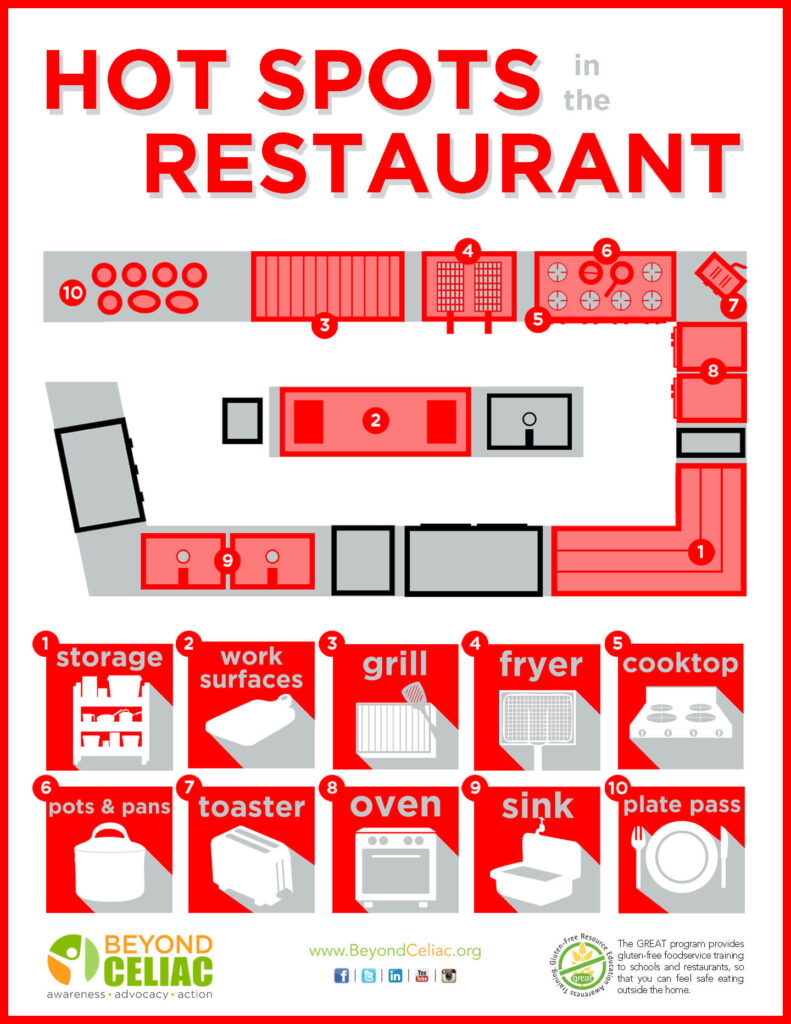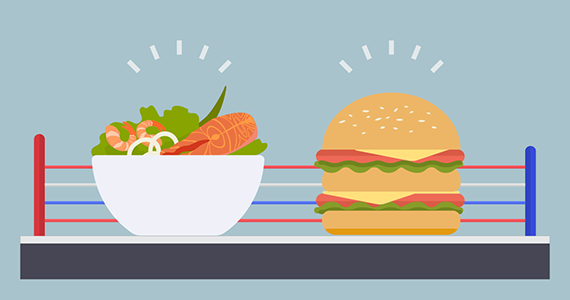Eating Safely at Restaurants


High-Risk Areas for Cross-Contamination in Restaurants
Shared Fryers
- Ask: Inquire about dedicated fryers for gluten-free items.
- Suggestion: Opt for grilled or oven-baked alternatives.
Grilled Surfaces:
- Ask: Request your dish to be prepared on a cleaned section of the grill.
- Suggestion: Choose proteins cooked in separate pans or on foil.
Shared Utensils:
- Ask: Confirm the use of dedicated utensils for gluten-free dishes.
- Suggestion: Politely request fresh utensils or use disposable ones.
Cross-Contaminated Ingredients:
- Ask: Question the staff about shared ingredients in salads, sauces, or toppings.
- Suggestion: Opt for simple, whole ingredients and request ingredient lists.
Common Fryer Oil:
- Ask: Confirm the oil used in the fryer is not shared with gluten-containing items.
- Suggestion: Explore grilled or baked options to avoid fried foods.
Shared Cutting Boards:
- Ask: Inquire about separate cutting boards for gluten-free preparations.
- Suggestion: Request the use of a clean board or surface.
Sauces and Marinades:
- Ask: Check for gluten-free alternatives or request sauces on the side.
- Suggestion: Choose dishes with simple seasoning or ask for customized options.
Bread Baskets on Tables:
- Ask: Request that bread baskets be removed or kept away from your table.
- Suggestion: Communicate your dietary needs to the server upon arrival.

Buffet-style Restaurants:
- Risk of shared utensils and close placement of dishes.
- Scope out the buffet before committing.
Fast Food Chains:
- Shared cooking surfaces and fryers pose cross-contamination risks.
- Research online for gluten-free options or alternatives.
Asian and Mexican Restaurants:
- Soy sauce and flour tortillas are prevalent.
- Inquire about gluten-free alternatives or customized options.
